'Latest Recipe’ was the name of the restaurant at the hotel where TVS was kind enough to put us up, which I found quite amusing since ...
'Latest Recipe’ was the name of the restaurant at the hotel where TVS was kind enough to put us up, which I found quite amusing since we were there to ride the latest recipe for their flagship offering – the Apache RR 310. It’s a recipe that has evolved quite a lot over the years, and the bike has been around for 7 now. It’s received new features, hardware updates, and fancy optional extras, all of which have kept it relevant and refreshed during this time. This latest recipe has once again been refined and improved, specifically to make it better on the racetrack. Here’s how it panned out.
TVS Apache RR 310: mechanical changes
The boffins at TVS have been hard at work on the engine, bumping up the compression ratio, increasing the airbox volume and throttle body diameter, and lightening the piston – much of this complicated engineering-type stuff has been carried over from the naked RTR 310. What matters, though, is that both power and torque have gone up, from 34hp and 27Nm to 38hp and 29 Nm. And you do feel this extra horsepower, especially at the top end of the rev range, where the engine pulls harder than before.
So, on the two long straights here at CoASTT, the new RR climbs through its gearbox smoothly, which should make it entertaining on the road as well. However, this update has also made the engine feel a little more peaky than before – if you’re not in the right gear when exiting a corner and fall out of the powerband, progress will be slow (something that’s also more pronounced by Coastt’s undulating layout).
What also helps on the track is the bi-directional quickshifter, which works quite well. Whether it’s climbing up or hammering down the gearbox, it manages quick and positive shifts, meaning you can leave the clutch alone. Of course, on the track, you’re almost always shifting at high revs and full throttle, while on the road, there’s a lot more low RPM, part-throttle shifting. TVS says the quickshifter works from 2300rpm onwards, so we look forward to finding out how it behaves on the road soon.
TVS Apache RR 310: new features for 2024
There are a few additional goodies on the RR this year, most of which make it cooler and a little more convenient. Cruise control and adjustable levers have been carried over from the RTR 310, adding to the overall convenience. The first of the two big new talking points is a very neat-looking transparent clutch cover (and it’s standard, no less!).
And as I’m sure you’ve noticed, there are also winglets now. Sure, they look cool, but do they serve a purpose? Well, TVS claims these new winglets generate a maximum downforce of 3kg, likely at or near the motorcycle's top speed. 3kg isn’t a lot, and you’re not doing the top speed very often, so for the most part, the function of these winglets is to make the bike look cooler and generate conversation, both of which they seem to be doing quite well.
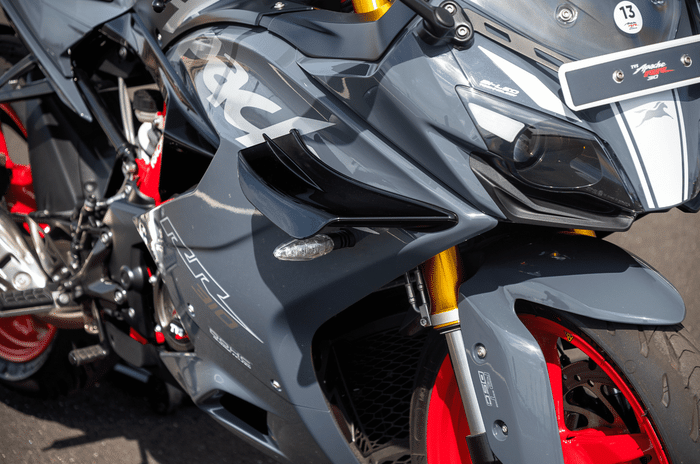
As before, the RR continues to be offered with optional extra BTO kits, and the bike we rode was fitted with both available options. The Dynamic kit costs Rs 18,000 and brings in adjustable front and rear suspension from KYB, a brass-coated final drive chain, and a TPMS – the latter is new for this year. The Dynamic Pro kit goes further, bringing in a host of electronic rider aids packaged as what TVS calls RT-DSC (Race Tuned Dynamic Stability Control). This includes cornering traction control, ABS, cruise control, and wheelie control. On the suspension and handling front, the RR continues to be a very natural motorcycle, flowing through corners with ease and behaving very predictably. It’s definitely a fun bike to ride here on the track, and it’s great to still have the sticky Michelin Road 5 rubber on offer here.
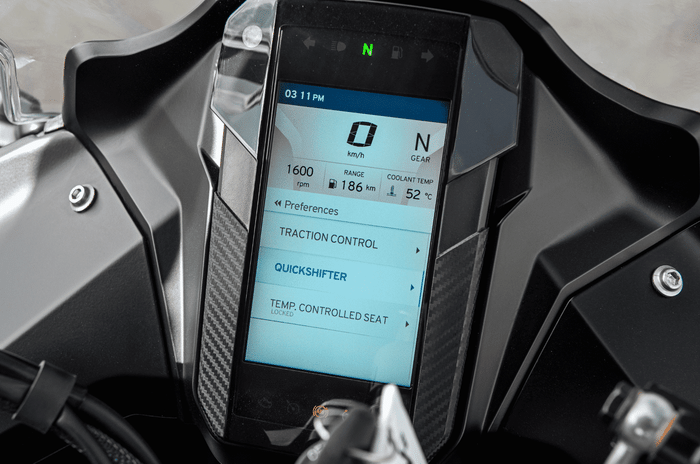
The electronics are a bit more of a mixed bag, though. The cornering ABS seems to be very well-judged and calibrated, because even when braking hard here on the track – sometimes while slightly leaning into a corner – it never interfered. The cornering traction control, though, seems like it could use some work. Usually, you’d want a system like this to intervene just before or as the rear tyre begins to slip under acceleration. But the traction control here seems to simply reduce power output at high lean angles, irrespective of whether the rear tyre is close to slipping or not. As you pick up the bike on the corner exit and the lean angle reduces, it gradually feeds in more and more power.
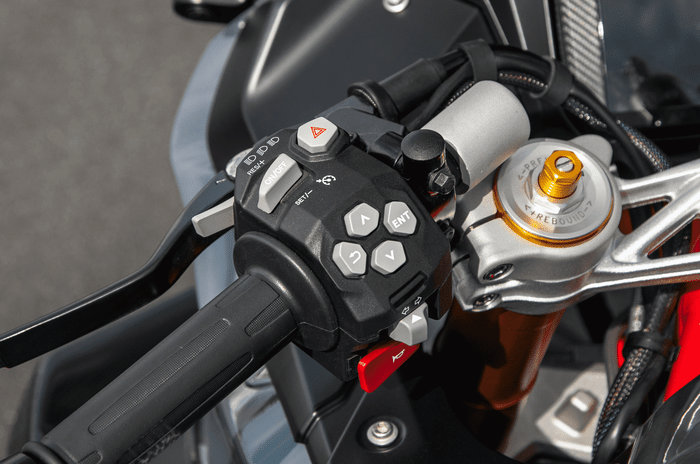
This is very similar to what we experienced on the naked RTR 310 when we first rode it on the track last year, but not quite as pronounced. So, an experienced rider will almost certainly be quicker with the traction control switched off, but it’s a good feature for less experienced riders who may be new to track riding.
TVS Apache RR 310: price & verdict
All these updates mean that prices have gone up, of course. You can still get the base variant in red without a quickshifter at a fairly reasonable price of Rs 2.75 lakh. But if you want the quickshifter, it’s a big jump to Rs 2.92 lakh, which then becomes Rs 2.97 lakh if you want this neat new Bomber Grey colour option. Start throwing in the optional extras and a fully-loaded RR310 will now set you back close to Rs 3.40 lakh, making it more expensive than the more powerful KTM RC 390.
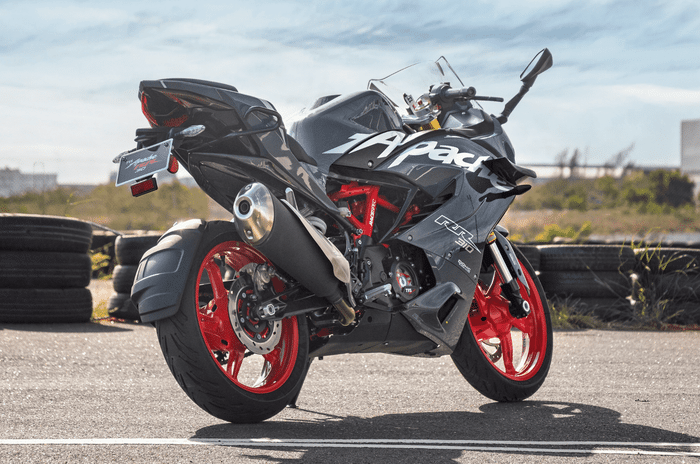
The Apache RR 310 is now more performance-focused than ever before. With additional power and features like the quickshifter, it feels more at home on the track than it ever has, with earlier strengths like the grippy Michelin Road 5 rubber also being carried over. As a sportbike, the updated RR 310 is a good one, and you’ve got a good amount of customisation options on offer too. But this is now a hotly contested segment, with the likes of the Aprilia RS 457 and KTM RC 390 to contend with. How it stacks up against those rivals, and what this updated bike feels like out on our roads, is something we hope to bring to you soon.
Also See: 2024 TVS Apache RR 310 video review
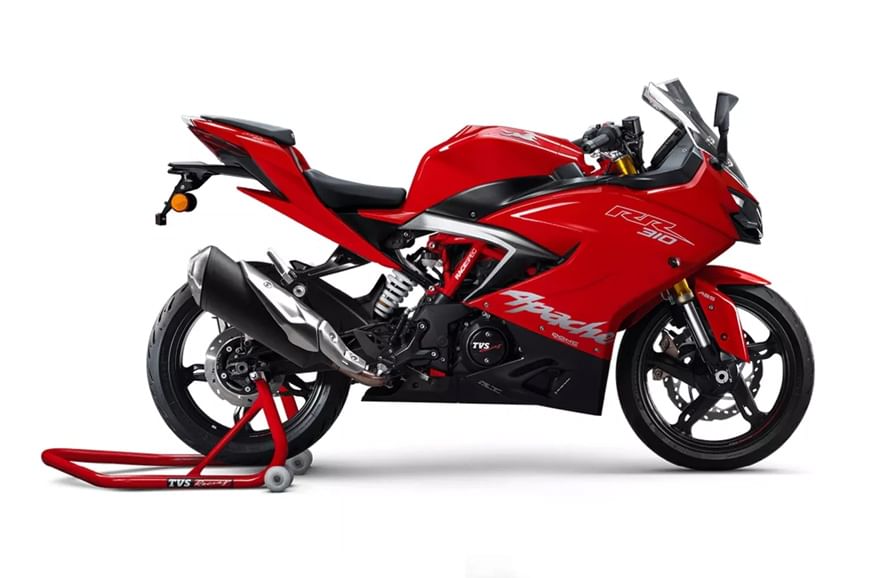 TVS Apache RR310
TVS Apache RR310 KTM RC 200
KTM RC 200  Yamaha YZF R15 V3
Yamaha YZF R15 V3  Bajaj Dominar 400
Bajaj Dominar 400  Bajaj Pulsar RS 200
Bajaj Pulsar RS 200  Suzuki Gixxer SF 250
Suzuki Gixxer SF 250  Kawasaki Ninja 300
Kawasaki Ninja 300 
